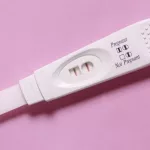Hey there! If you’re reading this, you (or someone you love) is probably facing the reality of a lupus nephritis diagnosis and wondering how on earth you’ll afford Lupkynis. The price tag can feel like an impossible mountain, but trust me—there are several paths around, up, and even through it. In the next few minutes we’ll break down the actual price, the programs that can shave thousands off your bill, and the exact steps you can take right now. Grab a cup of tea, get comfortable, and let’s walk through this together.
Quick Answers Overview
- What does Lupkynis cost? Roughly $16,900 for a 6‑month supply (180 capsules) if you pay cash.
- Can I get it for free or almost free? Yes. 97 % of patients enrolled in the official support program pay less than $10 per prescription.
- Who qualifies for assistance? U.S. citizens or legal residents with a doctor’s prescription who meet income or insurance criteria.
- How do I start? Call the Aurinia Alliance helpline at 1‑833‑287‑4642 or register online to speak with a Nurse Case Manager.
That’s the “what’s what” in a nutshell. Below you’ll find the why, how, and where—all laid out in plain English.
Understanding Lupkynis Pricing
Why is Lupkynis so pricey?
Lupkynis (voclosporin) is a brand‑only drug—there’s no generic version yet. That means the manufacturer sets the list price, and pharmacies add their own mark‑ups. Insurance plans can negotiate discounts, but the baseline remains high because the medication was developed for a relatively small patient pool.
What you’ll see on a pharmacy receipt
If you walk into a pharmacy without any insurance or discount, you’ll likely be quoted around $16,936 for a 6‑month bottle of 180 capsules. That number comes from the cash‑pay estimate published by Drugs.com in 2025. The figure can shift a bit depending on the chain and the state, but it gives a solid baseline.
Price comparison at major chains (discount‑card applied)
| Pharmacy | Cash price (180 caps) | Discount‑card price* | Estimated copay (insured) |
|---|---|---|---|
| Walgreens | $16,936 | $3,200 | <$10 (eligible) |
| CVS | $17,120 | $3,150 | <$10 (eligible) |
| Walmart | $16,800 | $3,100 | <$10 (eligible) |
*Prices are based on the free Drugs.com discount card, which can chop up to 80 % off the cash cost. The copay figures assume you’re enrolled in the Aurinia Alliance assistance program or a similar patient‑aid plan.
Insurance impact
Commercial insurers, Medicare, and Medicaid each have their own formularies. Some plans require a prior‑authorization letter from your nephrologist, while others may place Lupkynis in a “Tier 3” specialty tier that still leaves you with a high out‑of‑pocket amount—unless you pair it with a copay‑card or a patient assistance program.
Financial Help Options
Aurinia Alliance Patient Assistance Program
This is the official safety net built by the drug’s manufacturer. To qualify, you must:
- Be a U.S. citizen or legal resident.
- Have a valid prescription for Lupkynis.
- Demonstrate either low income or lack of adequate insurance coverage.
Once approved, the program can cover the entire cost, or at the very least reduce your copay to under $10 per prescription. The enrollment process is straightforward—just call the toll‑free line or fill out the short online form. A dedicated Nurse Case Manager will walk you through every step, from paperwork to pharmacy coordination.
Discount & Copay Cards
Several third‑party services, such as the free Drugs.com discount card and Optum Perks, act like coupons you hand to the pharmacist before they ring up the price. These cards often save 50‑80 % on the cash price, but remember they’re not insurance; they’re a discount on the list price.
Medicare & Medicaid pathways
If you’re on Medicare Part D, you can apply for the “Extra Help” or Low‑Income Subsidy (LIS). This program can lower or eliminate your prescription premiums, deductibles, and co‑pays. Pairing LIS with the Aurinia assistance program usually means you won’t see a single dollar leave your bank account for Lupkynis.
Step‑by‑step: Adding Lupkynis to Medicare Part D
- Log in to your Medicare portal and check the drug formulary for your plan.
- If Lupkynis appears, note the tier and any prior‑authorization requirements.
- Submit proof of enrollment in a patient assistance program (the Aurinia Alliance can provide a letter).
- Call the plan’s pharmacy‑benefit manager to confirm coverage and ask about “step therapy” rules.
- Take the prescription to a pharmacy that accepts the discount card for the final savings.
Non‑profit and disease‑specific funds
Organizations like the Lupus Foundation of America maintain a master list of financial‑assistance resources. While they don’t sponsor Lupkynis directly, many of their programs—such as the Co‑Pay Relief fund—can cover ancillary costs (office visits, lab tests, transportation) that add up quickly. According to the foundation’s resource page, eligible patients can receive up to $2,500 per year for these “non‑drug” expenses.
Tips to Save Money
Before your doctor’s visit
Arm yourself with a notebook and a list of your current meds, insurance details, and recent lab results. Ask your physician to write a “medical necessity” note—this is the golden ticket for prior‑authorization and for patient‑aid programs alike.
During pharmacy pick‑up
Show the discount card or copay coupon BEFORE the technician scans the prescription. If the pharmacist hesitates, politely ask to speak with the pharmacy manager; many chains have a “discount‑card liaison” who can apply the savings retroactively.
After you receive Lupkynis
Keep every receipt. Insurance errors happen, and a quick phone call can often reverse an overcharge. Also, most patient‑assistance programs require annual re‑certification—mark your calendar for a reminder three months before your next refill.
Sample email to your insurance benefits team
Subject: Request for Lupkynis Prior Authorization & Financial Assistance Integration
Dear Benefits Team,
I am prescribed Lupkynis (voclosporin) for active lupus nephritis. My physician has provided a detailed medical‑necessity letter, and I am currently enrolled in the Aurinia Alliance patient‑assistance program, which can cover the full cost of the medication. Please let me know what additional documentation you require to approve coverage and apply the assistance benefit to my upcoming prescription.
Thank you for your prompt attention.
[Your Name]
Stay proactive
Financial programs can close, reopen, or change eligibility thresholds. Set a reminder to check the Aurinia Alliance website quarterly, and subscribe to their text alerts if available. A quick “yes, I still qualify” email can keep the $0‑copay flowing without interruption.
Real‑World Patient Experiences
Story: From $17k to $10
Maria, a 34‑year‑old teacher from Ohio, remembers the day her doctor wrote Lupkynis on her prescription. The pharmacy quoted $16,936. “I thought I’d have to quit,” she says. After a 30‑minute call to the Aurinia Alliance, she was paired with a Nurse Case Manager who helped her complete the patient‑assistance application. Within two weeks, Maria’s copay dropped to $9. “It felt like a weight lifted off my shoulders,” she tells me. Her experience mirrors the 97 % statistic posted on the official Lupkynis site, where most eligible patients pay less than $10 per bottle.
Clinician insight
Dr. Jamie Lee, a nephrologist at a major academic center, explains why he always discusses cost before prescribing.
“If a patient can’t afford the medication, adherence drops, and the disease can progress quickly. I make sure my patients know about the Aurinia Alliance and discount cards before they leave the office. It’s part of the treatment plan, just like dosage adjustments.”
Bottom Line Summary
Lupkynis doesn’t have to be a financial nightmare. The list price hovers around $16,900 for a six‑month supply, but with the right combination of manufacturer assistance, discount cards, Medicare/Medicaid benefits, and nonprofit support, most patients end up paying under $10 per prescription. The key steps are: (1) confirm eligibility for the Aurinia Alliance program, (2) use a reputable discount card at the pharmacy, (3) verify your insurance’s formulary and apply for Extra Help if you’re on Medicare, and (4) keep diligent records to avoid billing surprises.
If you’ve read this far, you’ve already taken the first step toward taking control of your health costs. What’s your next move? Call the helpline, fill out that short online form, or simply jot down the questions you want to ask your doctor at the next visit. You’re not alone in this—there’s a whole network of nurses, pharmacists, and fellow patients ready to help you navigate the maze.
Feel free to share your own experience in the comments below, or drop a question if anything feels unclear. We’re all in this together, and together we can make Lupkynis affordable.


















Leave a Reply
You must be logged in to post a comment.